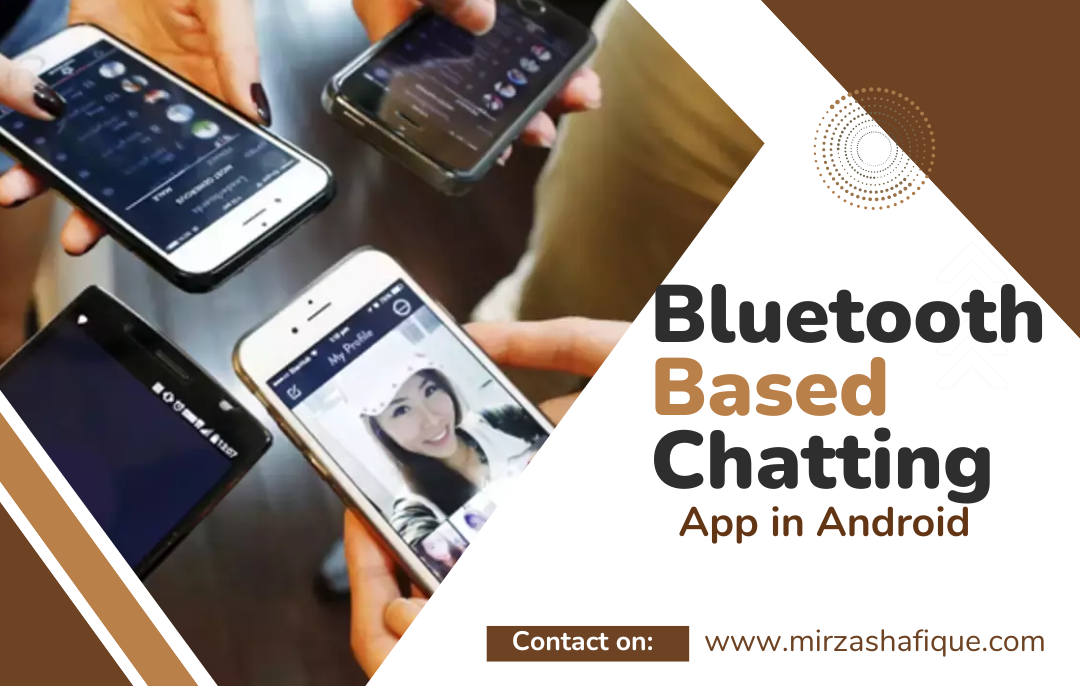Introduction
Mobile applications have revolutionized the way we communicate with each other. Chatting applications have become a part of our daily routine, and we use them to stay connected with our friends and family. Bluetooth-based chatting apps are becoming increasingly popular as they allow people to communicate with each other without the need for an internet connection. In this tutorial, we will develop a simple Android Bluetooth-based chatting app with step-by-step instructions and code examples.
Setting Up Development Environment
To develop an Android Bluetooth-based chatting app, we will need to set up our development environment. We will be using Android Studio as our Integrated Development Environment (IDE) for this project.
Once you have installed Android Studio, you will need to create a new project. To do this, open Android Studio and click on “Start a new Android Studio project.” You will then be prompted to select a project template. Select “Empty Activity” and click “Next.” Give your project a name and click “Finish.”
Creating Project
After setting up the development environment, we will create the UI components for our chatting app. We will be creating a simple chat layout that includes a text field for entering messages, a send button, and a chat box to display received messages.
To create the UI components, we will edit the activity_main.xml file located in the “res” folder of our project. Here’s an example of what our XML code should look like:
<RelativeLayout xmlns:android="http://schemas.android.com/apk/res/android"
xmlns:tools="http://schemas.android.com/tools"
android:layout_width="match_parent"
android:layout_height="match_parent"
android:paddingBottom="@dimen/activity_vertical_margin"
android:paddingLeft="@dimen/activity_horizontal_margin"
android:paddingRight="@dimen/activity_horizontal_margin"
android:paddingTop="@dimen/activity_vertical_margin"
tools:context=".MainActivity">
<EditText
android:id="@+id/editText"
android:layout_width="match_parent"
android:layout_height="wrap_content"
android:layout_alignParentLeft="true"
android:layout_alignParentStart="true"
android:layout_marginTop="20dp"
android:hint="Enter your message here" />
<Button
android:id="@+id/sendButton"
android:layout_width="wrap_content"
android:layout_height="wrap_content"
android:layout_below="@+id/editText"
android:layout_alignParentEnd="true"
android:layout_alignParentRight="true"
android:layout_marginTop="10dp"
android:text="Send" />
<TextView
android:id="@+id/textView"
android:layout_width="match_parent"
android:layout_height="wrap_content"
android:layout_below="@+id/sendButton"
android:layout_alignParentLeft="true"
android:layout_alignParentStart="true"
android:layout_marginTop="20dp"
android:textColor="#000"
android:textSize="16sp" />
</RelativeLayout>
This XML code creates a simple layout that includes an EditText for entering messages, a Button for sending messages, and a TextView for displaying messages.
Implementing Bluetooth Communication
Now that we have created the UI components for our app, we can implement Bluetooth communication. We will start by adding Bluetooth permissions to the AndroidManifest.xml file of our project.
<uses-permission android:name="android.permission.BLUETOOTH" /> <uses-permission android:name="android.permission.BLUETOOTH_ADMIN" />
Next, we will create a BluetoothAdapter object and enable Bluetooth if it is not already enabled.
BluetoothAdapter bluetoothAdapter = BluetoothAdapter.getDefaultAdapter();
if (bluetoothAdapter == null) {
// Device does not support Bluetooth
}
if (!bluetoothAdapter.isEnabled()) {
Intent enableBluetoothIntent = new Intent(BluetoothAdapter.ACTION_REQUEST_ENABLE);
startActivityForResult(enableBluetoothIntent, REQUEST_ENABLE_BT);
}
This code checks if the device supports Bluetooth and if it is not already enabled, it prompts the user to enable it.
Next, we will create a BluetoothServerSocket object and listen for incoming connections.
BluetoothServerSocket serverSocket = null;
try {
serverSocket = bluetoothAdapter.listenUsingRfcommWithServiceRecord(NAME, MY_UUID);
} catch (IOException e) {
// Error occurred while listening for incoming connections
}
BluetoothSocket socket = null;
while (true) {
try {
socket = serverSocket.accept();
} catch (IOException e) {
// Error occurred while accepting incoming connection
}
if (socket != null) {
// Handle incoming connection
break;
}
}
This code creates a BluetoothServerSocket object and listens for incoming connections. Once a connection is established, it creates a BluetoothSocket object to handle the communication.
Sending and Receiving Messages
Now that we have established a Bluetooth connection, we can send and receive messages. We will use a separate thread to handle the communication so that it does not block the UI thread.
To send a message, we will create a OutputStream object and write the message to it.
OutputStream outputStream = socket.getOutputStream(); String message = "Hello, World!"; outputStream.write(message.getBytes());
To receive a message, we will create a InputStream object and read the message from it.
InputStream inputStream = socket.getInputStream();
byte[] buffer = new byte[1024];
int bytes;
while (true) {
try {
bytes = inputStream.read(buffer);
} catch (IOException e) {
// Error occurred while reading input stream
break;
}
if (bytes > 0) {
// Handle received message
}
}
This code reads incoming messages from the InputStream object and handles them appropriately.
Future Scope for Development
This simple Bluetooth-based chatting app can be further improved and enhanced in a number of ways. For example, we can add support for multiple connections, implement encryption and authentication to secure the communication, and improve the user interface to make it more user-friendly.
Conclusion
In this tutorial, we have learned how to develop a simple Android Bluetooth-based chatting app with step-by-step instructions and code examples. We have also discussed the future scope for development and how this app can be further improved and enhanced. With this knowledge, you can now build your own Bluetooth-based chatting app and explore the world of mobile app development.


